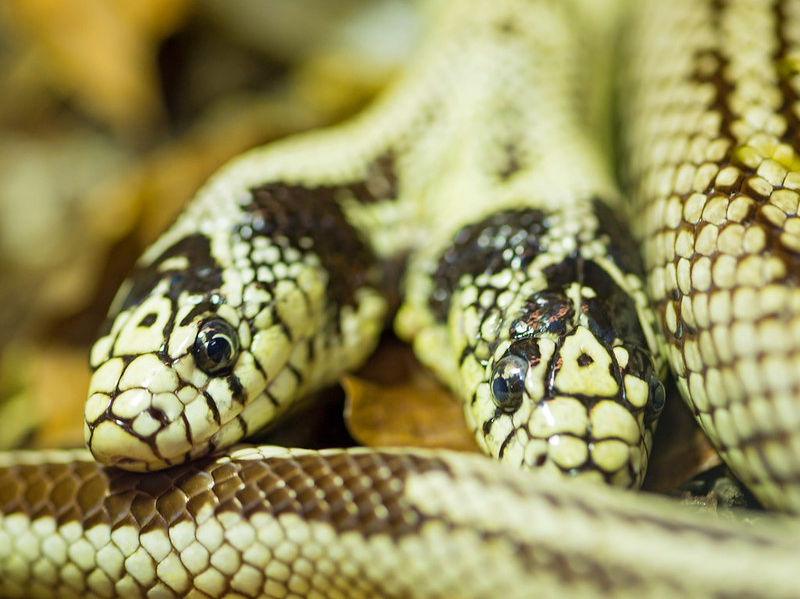Discover the Mysteries of Two-Headed Snakes
Two-headed snakes are a rare yet captivating phenomenon in the animal kingdom. These unique creatures, with two distinct heads joined to a shared body, have intrigued both scientists and enthusiasts alike. Found in several species, two-headed snakes often serve as a source of wonder and inspiration, even influencing mythical stories throughout history. At The Beastiary, we delve into the mysteries of these extraordinary reptiles, offering insights into their biology and the cultural significance they hold. Whether you're seeking knowledge or are simply curious, explore our resources to uncover the fascinating world of two-headed snakes.
Also known as: axial bifurcation, dicephalism, somatodichotomy
Two-headed snakes appear ass a rare but recurring biological curiosity, in most species of snake. These real animals may have inspired their many counterparts in myth and legend.
Real Two-Headed Snakes
These are snakes with two heads, and sometimes short necks before attaching to a shared body. However x-rays show that even when the snake is externally divided at or very near the head, each head has a separate stomach.

I'm a paragraph. Click here to add your own text and edit me. It's easy.
Sheep
Hypotrichosis is particularly rare in sheep but has been reported in the Polled Dorset. It can also occur as a complication of sarcoptic mange (Trioli et al, 2013).
Humans
Various forms of hypotrichosis also occur in humans, including alopecia.
References
-
Tsioli, V., R. Farmaki, A. Papastefanou, A. D. Galatos, M. Marinou, D. Tontis, V. S. Mavrogianni, D. Doukas, M. N. Saridomichelakis, and G. C. Fthenakis. "A case of bilateral auricular haematoma in a ewe-lamb with sarcoptic mange." _Small Ruminant Research_ 110, no. 2 (2013): 145-149.